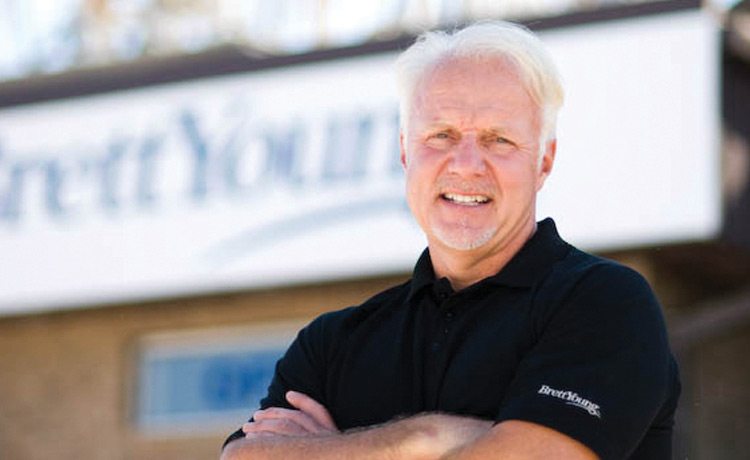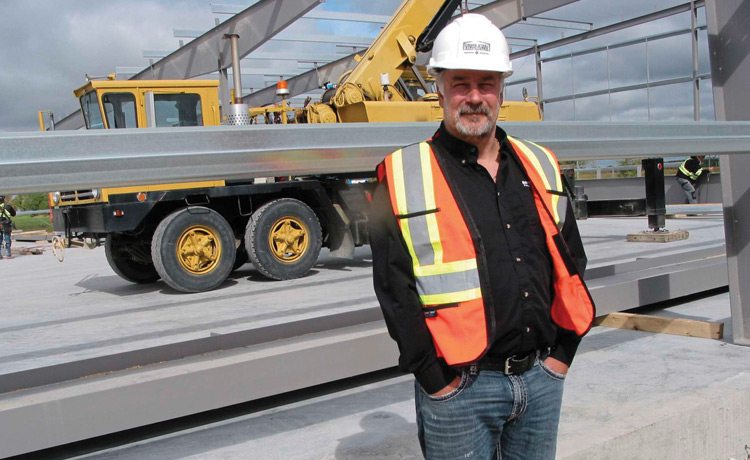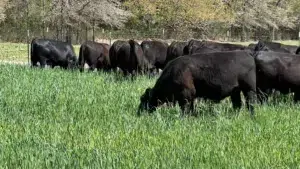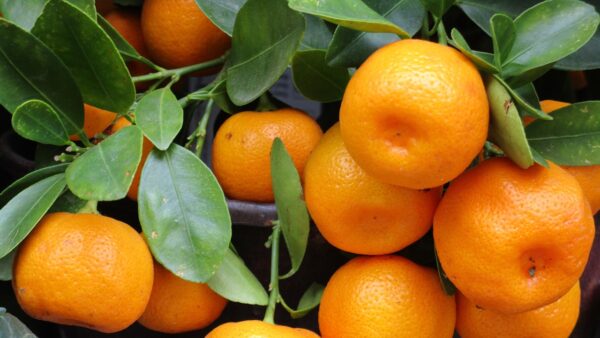Those in the business of producing, buying and selling forage and turf seed must be fluid and adapt to changing markets, access to information and labour, growth in farm size and increased sophistication.
_x000D_
Canada’s forage and turf seed sector has grown and changed over the years. With its roots in seed saved by early immigrants and traded amongst themselves, it has grown to a sophisticated sector that produces seed for a wide variety of crop kinds and occupies almost 200,000 acres across the country. The forage seed sector is the basis for the production of legume and grass forages for hay and hay processing and is increasingly important for soil conservation and improvement and for land reclamation. Canada’s turf seed sector has grown, supplying a demand for golf courses, sports fields, residential and commercial lawns and municipal parks, roadsides and more._x000D_
_x000D_
So, how is the sector different today? According to some of the important players in the business, changing markets, access to information and labour, growing farms and a tremendous increase in sophistication have forced changes in the business of producing, buying and selling forage and turf seed._x000D_
_x000D_
Changing Markets_x000D_
_x000D_
Seed companies are competing in a shrinking Canadian market. Robert Clark, DLF Pickseed president and CEO, says: “The dairy industry is a very important market for forages, and consumption of dairy products is not growing substantially in Canada. Improved dairy cattle genetics means that it takes less feed to produce the same amount of milk. There is also competition for acreage. Acres that have been traditionally planted to forages, particularly alfalfa for the dairy industry, are being plowed up and planted to cash crops like corn, which is also used in dairy production. The result is pressure on forage seed markets, forcing companies to compete for pieces of a smaller and smaller pie.”_x000D_
_x000D_
Martin Pick, former vice-chairman of Pickseed, agrees. “Dairy industry consolidation and highly variable livestock prices have put forage crops in direct competition with cash crops,” he says. “And at the moment, cash crops are winning.”_x000D_
_x000D_
_x000D_
Access to Information_x000D_
_x000D_
Improved communication and access to information has also had a tremendous impact. Terry Ewacha, executive vice-president at DLF Pickseed, says: “In the simpler days, seed businesses competed against their neighbours for farm customers in their regions, but producers are much more connected now. A grower can go online and in a minute or two can know the supply and demand for seed in any country in the world. So not only are we competing in a smaller Canadian market, we are competing with a wider diversity of companies around the world.”_x000D_
_x000D_
Access to Labour_x000D_
_x000D_
As with other sectors in agriculture, a significant challenge is access to labour. “In the simpler days, seed companies were built on people,” says Ewacha. “Seed plants were able to secure and keep good labour. Now we just can’t always get the people to take jobs in the seed sector, and if we can get them, it’s hard to keep them. Operations have to rely more on technology to keep plants operating.”_x000D_
_x000D_
Access to labour is also a significant challenge for the turf seed sector. A study done for the Ontario Turf Grass Research Foundation states that labour is the No. 1 challenge for the turf grass industry, followed by water policies and costs. This has placed downward pressure on the Canadian turf seed sector._x000D_
_x000D_
Changing Farm Businesses_x000D_
_x000D_
It is generally agreed that one of the biggest changes for the forage seed sector is the changing farm landscape. According to Kurt Shmon, president of Imperial Seeds: “The number of mixed farms, producing crops and cattle, has dramatically declined. Cattle are being finished in large feedlots and not as much on grass. The number of farm clients for forage seed is declining.” That statement was reinforced by Martin Pick: “Back in the 1960s, Pickseed had more than 5,000 farm customers in Eastern Canada alone,” he says. “Now those ledgers are going to the Canadian Agricultural Museum. The farm client base is just not there anymore.”_x000D_
_x000D_
And Canadian farms continue to grow. According to Lloyd Dyck, chairman of BrettYoung Seeds, forage seed companies are competing for fewer, but much larger farm businesses. “Farms are getting bigger, so the companies that serve them have to get bigger,” he says. “You have to grow or you have to go, and growing has its challenges. The increased cost of doing business puts seed companies at greater business risk.”_x000D_
_x000D_
Sometimes the risk involved with growth is too much. In the past two decades there have been two significant examples._x000D_
_x000D_
In 1995 AgriBiotech Ltd., with management in Las Vegas, Nevada, set as its goal to have 45 per cent of the world forage and turf market by the year 2000. By 1998, AgriBiotech had acquired 34 forage and turf seed companies in the United States and Canada. Its Canadian acquisitions were Oseco Canada and Rothwell Seeds, both well established Canadian forage and turf seed companies. Most of the company purchases were for some cash and large shares of AgriBiotech stock. Just two short years later in June and July 2000, AgriBiotech was in bankruptcy, leaving seed growers with seed in the bins and uncertainty about the future. Ontario-based Pickseed acquired the Canadian assets of AgriBiotech Canada._x000D_
_x000D_
In the late 1990s, two companies (Value Added Seeds and Performance Seeds) merged to become Quality Assured Seeds, owned by 200 seed growers. The company was renamed FarmPure Seeds in 2005. It was part of the Saskatchewan-based FarmPure family of companies. The goal of FarmPure was to develop profitable and sustainable value chains for its stakeholders. In the summer of 2008, the company filed for bankruptcy, and a trustee was appointed. The trustee said that the financial difficulties were largely due to “rapid expansion.” Pickseed acquired FarmPure seed in October 2008._x000D_
_x000D_
There are also many examples of where growth has resulted in success._x000D_
_x000D_
_x000D_
Winnipeg-based BrettYoung has been growing and diversifying during the past decade, with good results. “We built new plants in Western Canada, including a new seed coating plant and we entered the golf course turf market in Ontario,” Dyck says. “We are also doing research into the use of inoculants and we have entered the elite canola, corn and soybean markets in Western Canada.”_x000D_
_x000D_
Shmon’s Imperial Seeds is also growing and changing. “I’m very optimistic about the future,” he says. “We have become an integrated company — from seed production to supplying the end user. We are also exploring new opportunities for ground cover crops, from tillage radish to phacelia to capture markets in Europe where the ground always has to be green. The future is bright, so bright that I am building a new plant.”_x000D_
_x000D_
Growth is also working for Pickseed. In the summer of 2013, Danish-based DLF-Trifolium announced its purchase of Pickseed. According to Ewacha: “Our integration with DLF has given us access to a massive research department. It has also given us greater access to international markets.”_x000D_
_x000D_
_x000D_
The Positive Impact of Regulatory Change_x000D_
_x000D_
It is generally agreed that one of the most positive things to happen in Canada recently was the change to the variety registration system for forage crops. In 2014, forage crops were placed in Part III of a new variety registration system, removing the requirements for pre-registration testing and a recommendation from a recognized committee. It allows forage varieties to be registered in a more timely manner._x000D_
_x000D_
Shmon says: “It was a very significant change for our sector. It has allowed seed companies to make new, improved varieties more quickly available to growers. It has allowed my company to get involved in seed retail. We are now retailing new, improved varieties from around the world.”_x000D_
_x000D_
Shmon was originally concerned about the changes to variety registration “My concern was that without the oversight and recommendation from a committee, unproven varieties may be registered,” he says. “But those concerns didn’t manifest. It has been a very positive thing. In fact, my company will be offering 10 or 12 new varieties this year alone.”_x000D_
_x000D_
The benefits of variety registration system changes were also noted by Clark. He says variety registration changes, combined with the integration with DLF made an immediate difference. “We now have the ability to better provide producers with exactly what they want,” he says. “DLF spends millions of dollars every year on forage research and has developed many new and improved forage varieties. With the changes to variety registration many of those new varieties were made immediately available to producers. They didn’t have to wait three years for the varieties to be registered in Canada.”_x000D_
_x000D_
Importance of International Trade_x000D_
_x000D_
In addition to being more competitive for domestic markets, forage and turf seed companies continue to look to international markets. Ewacha says: “The export market is extremely important for Canadian forage seed companies. Without exports, I estimate that two-thirds of Canada’s forage and turf seed companies would disappear.”_x000D_
_x000D_
Shmon says that Canada continues to be an important supplier of forage seed to international markets. “We have the best producers in the world. We have established exceptional cleaning and processing facilities,” he says. “And we are very, very good at meeting customer demands.”_x000D_
_x000D_
In 2015, Canadian forage and turf seed exports were worth $135 million. Alfalfa seed leads Canadian exports, followed by creeping red fescue and timothy. Together these crop kinds account for 63 per cent of forage and turf seed exports. While the United States is still the biggest export market for most forage and turf seed, China and the Netherlands are growing. For example exports of alfalfa seed to the United States increased by 1.5 per cent in 2015 from 2014, while exports of alfalfa seed to China increased by 20 per cent and exports to the Netherlands increased by 11 per cent._x000D_
_x000D_
Of Technology and Trade_x000D_
_x000D_
Canada is one of the pioneers of sophisticated plant breeding techniques, including the use of biotechnology. By far the largest acreages of canola, corn and soybeans in Canada are planted to genetically enhanced (GE) varieties. Biotechnology has not been as widely used as a breeding technique in forage and turf crops, GE forages and grasses are only slowly coming into the marketplace._x000D_
_x000D_
In Canada, Roundup Ready alfalfa was approved by Health Canada and the Pest Management Regulatory Agency (PMRA) in 2005. Alfalfa containing a trait for reduced lignin was approved in 2014, and alfalfa containing the stack of the two traits was approved at the end of 2014. Six varieties of GE alfalfa are now registered and available on the market in Eastern Canada. The varieties have not been commercialized in Western Canada. In the United States, in addition to GE alfalfa, herbicide-tolerant varieties of bluegrass, bentgrass and tall fescue are close to commercialization._x000D_
_x000D_
While it is generally agreed that conventional and new breeding techniques can and will deliver much needed improvements to forage varieties, forage seed companies and growers are divided on the commercialization of GE forages. Imperial Seed’s Shmon is concerned about the potential impact on his markets in Europe and China. He says those markets make up well over half of his company’s business._x000D_
_x000D_
“There is still a lot of opposition to the technology internationally,” he says. “I know that the science proves that the concern doesn’t make sense, but it doesn’t have to make sense when it comes to market demand. As much as we embrace technology, sometimes the benefits don’t make up for the potential market losses.”_x000D_
_x000D_
However, others like Pickseed’s Ewacha believe that other factors, particularly trade barriers and subsidies have a bigger impact than does advances in technology. “Countries in the EU are still heavily subsidizing forage and forage seed production,” he says. “For example, France has implemented a set of domestic subsidies for protein crops. Until 2020, French farmers will receive between 100 and 200 euros (between $200 and $300 Canadian) per hectare to grow alfalfa and clover. That has a huge impact on our ability to compete in that market.”_x000D_
_x000D_
Ewacha also says the sector needs to pay attention to its biggest customer. “It’s important to remember that the United States is still our biggest market and if we can’t stay current with technology, we won’t be competitive in that marketplace,” he says. According to Ewacha, Canadian forage and turf seed exporters have been dealing with potential presence of other GM seeds like canola in seed lots for many years, and markets are still strong._x000D_
_x000D_
Where to from here? It’s clear: the experts agree that the forage seed business is an exciting and dynamic place to be. It has undergone tremendous change, faced challenges and yet optimism is still strong.















